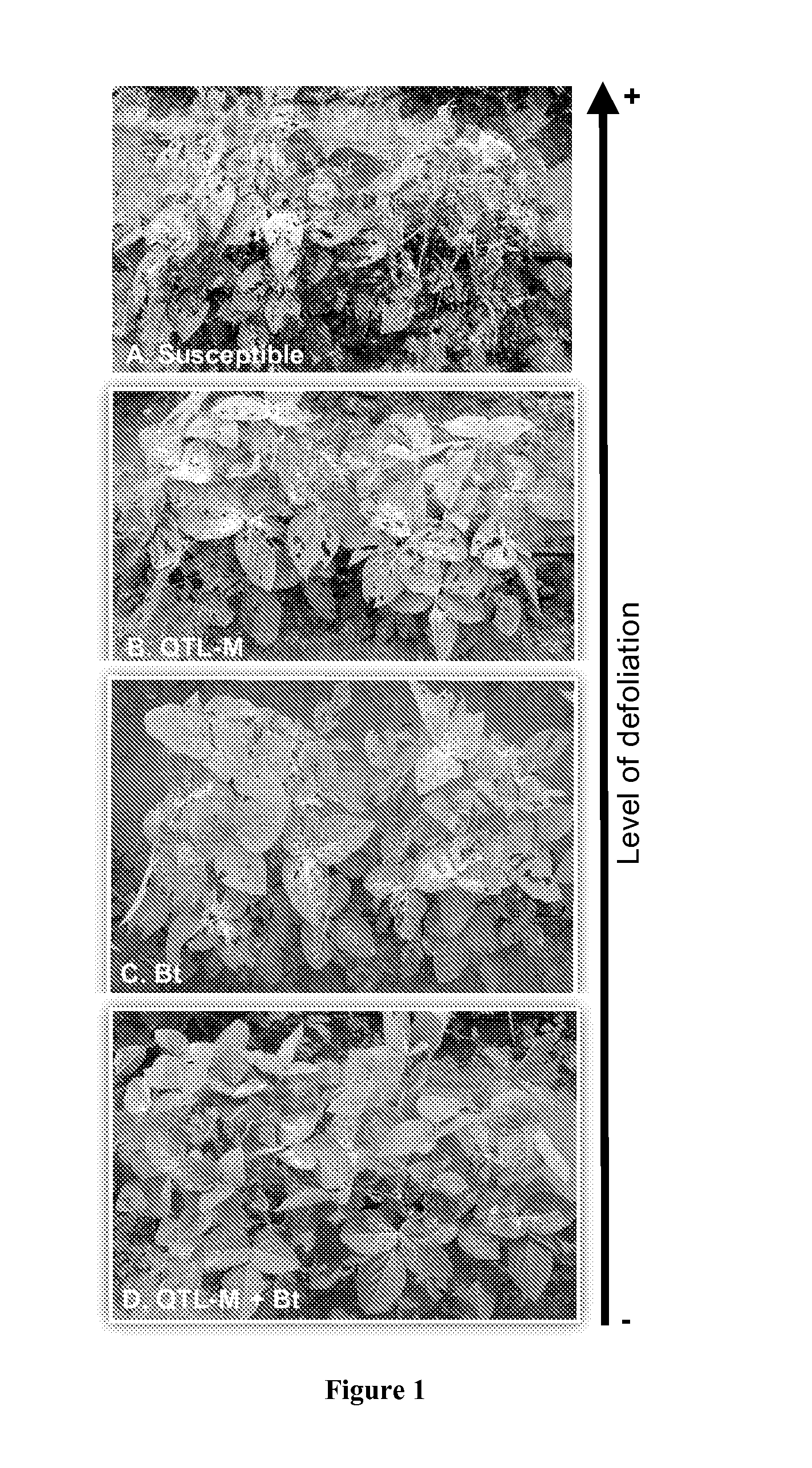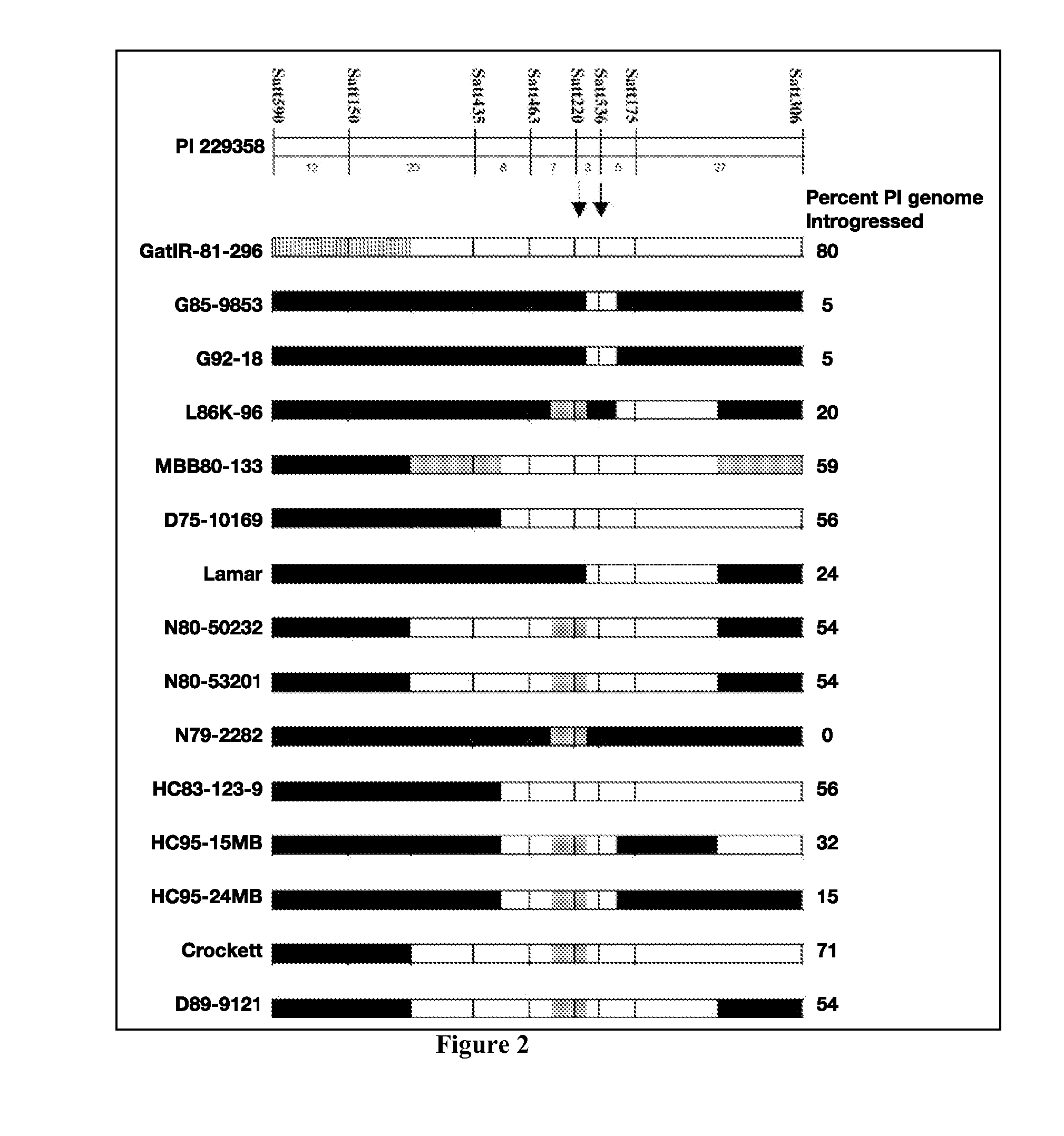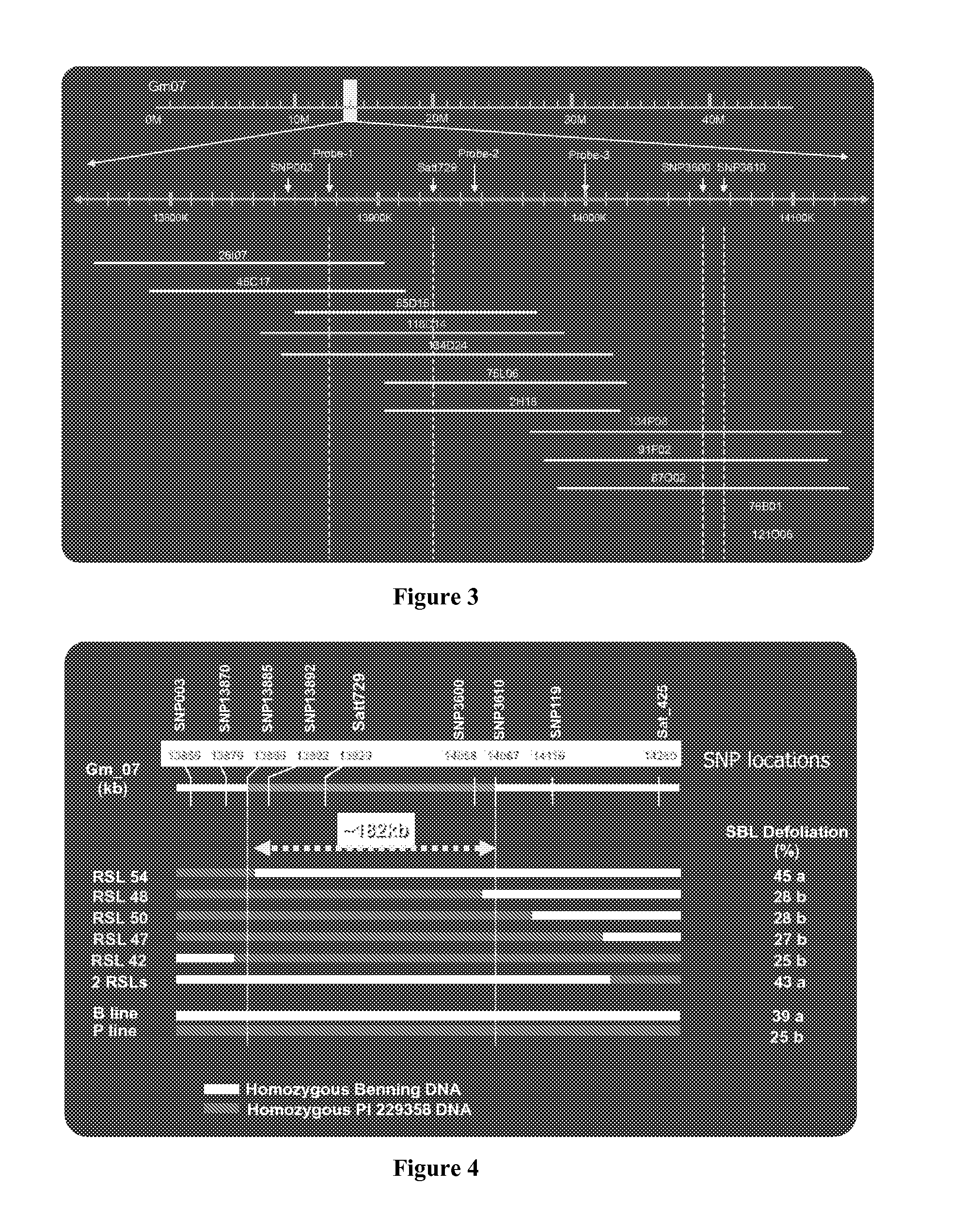Compositions and Methods for Increasing Pest Resistance in Plants
- Summary
- Abstract
- Description
- Claims
- Application Information
AI Technical Summary
Benefits of technology
Problems solved by technology
Method used
Image
Examples
example 1
The Qualitative Trait Loci QTL-M Imparts Insect Resistance
[0276]In the late 1960s, Van Duyn, et al., Crop Science, 11:572-73 (1971) identified three soybean plant introductions (PI) from Japan with Host Plant Resistance (HPR) to chewing insects, namely PI171451, PI227687, and PI229358. These plants exhibited resistance to multiple insect pests, including a coleopteran such as the Mexican bean beetle (MBB), and several soybean lepidopteran pests such as soybean looper (SBL), velvetbean caterpillar (VBC), and beet armyworm (BAW) (Hatchett, et al., Crop Science, 16:277 (1976)); Lambert, et al., Crop Science, 24:887 (1984)).
[0277]Genetic mapping populations were created by crossing the insect-resistant genotypes PI229358 and PI171451 to the susceptible cultivar Cobb so that the insect-resistant loci could be identified using molecular markers (Rector et al., 1998; Rector et al., 2000; Rector et al., 2000)). A major QTL was identified on Linkage Group (LG) M (now chromosome 7) of PI22935...
example 2
QTL-M Enhances the Effectiveness of Bt in Soybean
[0279]The effects of the resistant alleles for QTL-M and QTL-H from PI229358 on the effectiveness of Bt were also investigated. JackBt (soybean cultivar Jack (Nickell, et al., Crop Science, 30:1365 (1990)) engineered with Bt) was crossed with PI229358, followed by two backcrosses to JackBt. JackBt expresses a synthetic Bacillus thuringiensis insecticidal crystal protein gene transgene (Stewart, et al., Plant Physiol, 112:121-29 (1996), and under field conditions (FIG. 1C) is resistant to CEW and VBC (Walker, et al., TAG Theoretical and Applied Genetics, 109:1051-57 (2004)). SSR markers were used for marker-assisted backcrossing to obtain individuals carrying the QTL-containing regions from PI229358. Then, F3-derived lines with QTL-M and / or Cry1Ac were identified and evaluated for resistance (Walker, et al., Molecular Breeding, 9:43-51 (2002)). Antibiosis to CEW and SBL was measured as larval weight gain in bioassays with detached leav...
example 3
QTL-M is in a 0.52-cM Segment of Chromosome 7
Materials and Methods
[0285]Sequencing of Polymorphic Regions within QTL-M Polymorphic regions were detected in an alignment of the QTL-M region from PI229358 and Williams 82. Oligonucleotides flanking the polymorphisms were designed, and used to amplify genomic DNA from the panel of susceptible and resistant genotypes. To detect polymorphism unique to insect-resistant soybean genotypes, the PCR products were sequenced and assembled to the corresponding sequence of PI229358.
Results
[0286]The location of QTL-M was narrowed down from an 8-cM to a 0.52-cM segment after developing and screening 1,911 recombinant substitution lines (RSLs). A BAC library was created from the insect-resistant PI229358, which is publicly available through the Clemson University Genomics Institute (Zhu, et al., Plant Molecular Biology Reporter, 27:229-235 (2009)). The SSR markers used to identify the RSLs containing QTL-M were used to find the location of this QTL i...
PUM
| Property | Measurement | Unit |
|---|---|---|
| Electrical resistance | aaaaa | aaaaa |
Abstract
Description
Claims
Application Information
 Login to View More
Login to View More - R&D
- Intellectual Property
- Life Sciences
- Materials
- Tech Scout
- Unparalleled Data Quality
- Higher Quality Content
- 60% Fewer Hallucinations
Browse by: Latest US Patents, China's latest patents, Technical Efficacy Thesaurus, Application Domain, Technology Topic, Popular Technical Reports.
© 2025 PatSnap. All rights reserved.Legal|Privacy policy|Modern Slavery Act Transparency Statement|Sitemap|About US| Contact US: help@patsnap.com



